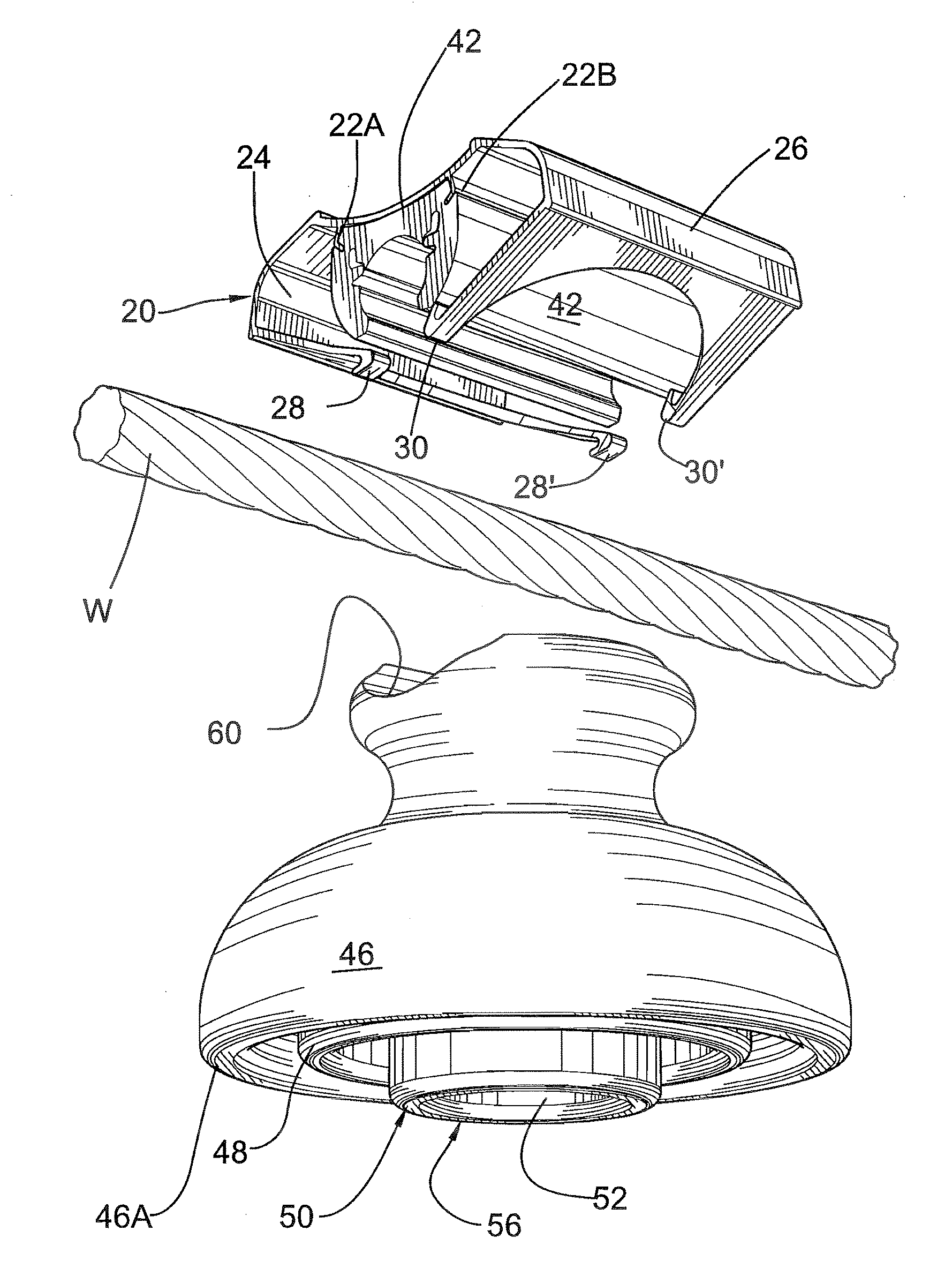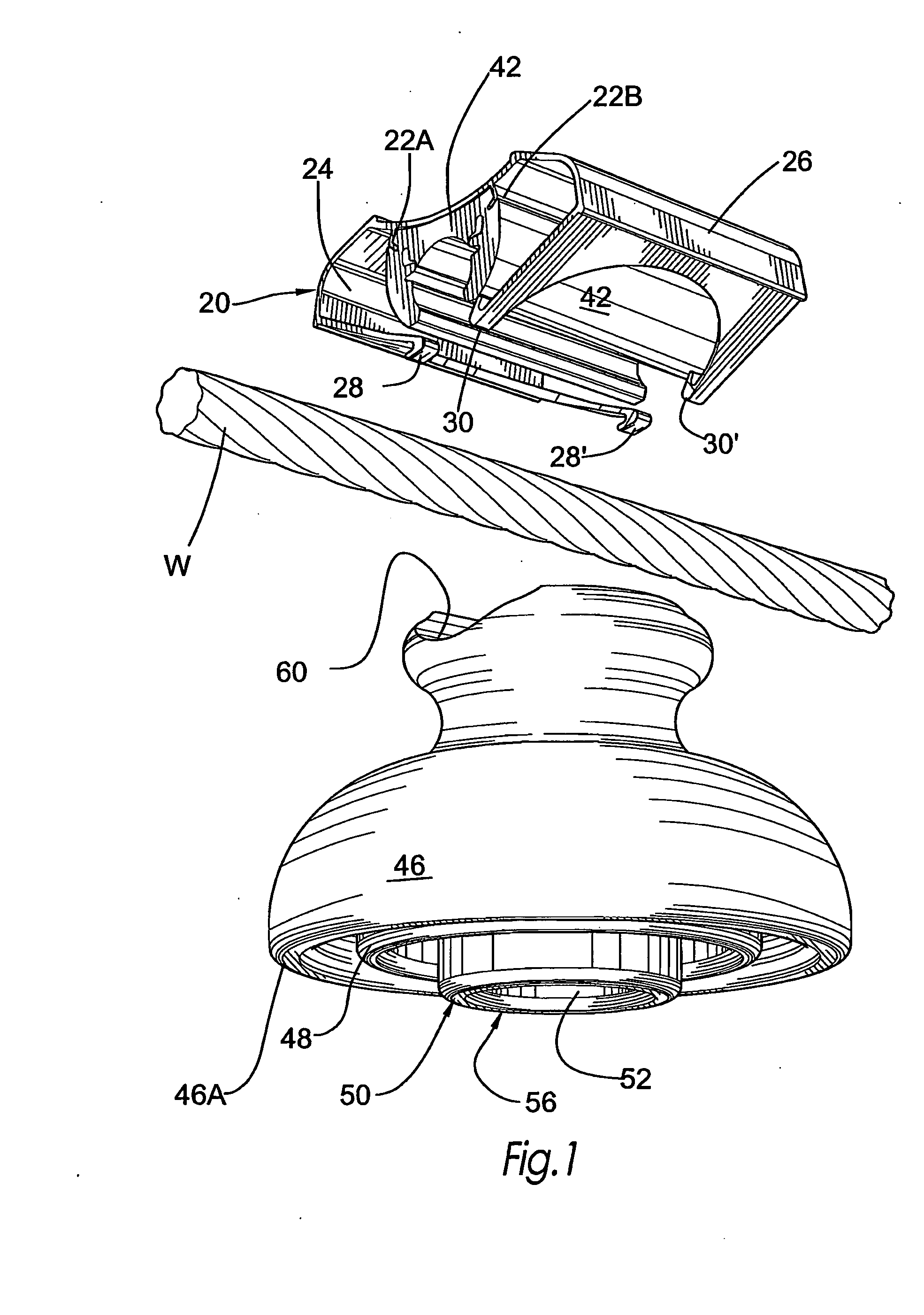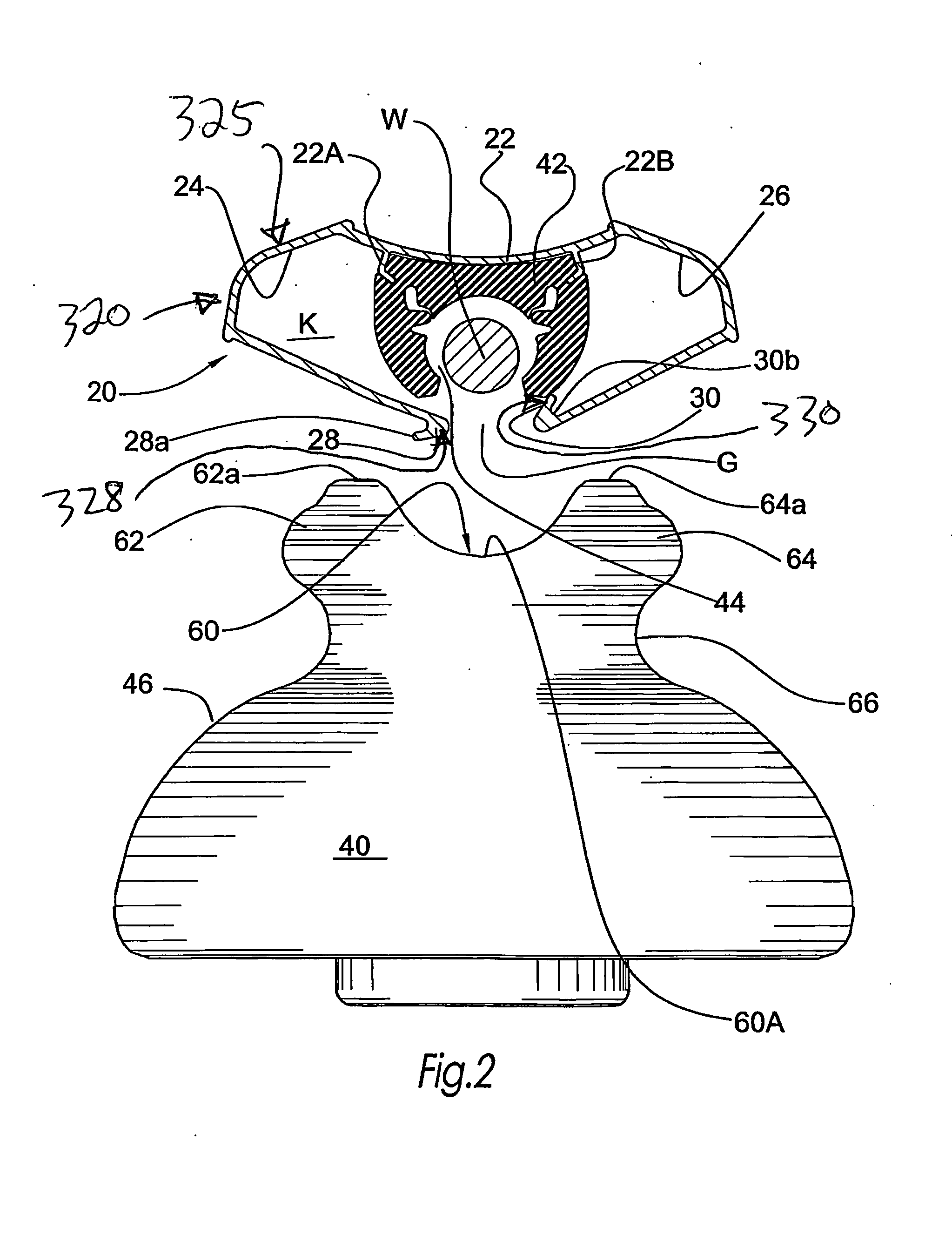Electric cable and insulator self-locking system, and method of installation thereof
a technology of self-locking and electric cables, which is applied in the direction of machine supports, garments, household objects, etc., can solve the problem of the insulator being unable to self-lock, and the clamp could accidentally detach from the insulator, so as to achieve the effect of safe and convenient us
- Summary
- Abstract
- Description
- Claims
- Application Information
AI Technical Summary
Benefits of technology
Problems solved by technology
Method used
Image
Examples
Embodiment Construction
[0042]According to a first embodiment of the self-locking connector system illustrated in FIGS. 1-11, there is disclosed a semi-rigid clasp 20 having a main web 22 from which project a pair of opposite arcuate arms 24, 26. At least clasp main web 22, and preferably also side arms 24, 26, are made from a resilient material so as to be spring loaded wherein side arms 24 and 26 have limited tilt capability relative to one another. Each arm 24, 26, defines a main body with a pair of inner free end flange 28, 28′, and 30, 30′, respectively.
[0043]In their unbiased condition, the two side arms 24, 26, are spaced apart, and define a spacer gap G between their pairs of proximal end flanges 28, 28′, 30, 30′, wherein a generally open inner pocket K is circumscribed by web 22 and arms 24 and 26. Flanges 28, 28′, are in spaced register with flanges 30, 30′, when web 22 is unbiased. Laterally spaced flanges 28, 28′, of arm 24 are outturned, while laterally spaced flanges 30, 30′ of arm 26 are int...
PUM
| Property | Measurement | Unit |
|---|---|---|
| Resilience | aaaaa | aaaaa |
Abstract
Description
Claims
Application Information
 Login to View More
Login to View More - R&D
- Intellectual Property
- Life Sciences
- Materials
- Tech Scout
- Unparalleled Data Quality
- Higher Quality Content
- 60% Fewer Hallucinations
Browse by: Latest US Patents, China's latest patents, Technical Efficacy Thesaurus, Application Domain, Technology Topic, Popular Technical Reports.
© 2025 PatSnap. All rights reserved.Legal|Privacy policy|Modern Slavery Act Transparency Statement|Sitemap|About US| Contact US: help@patsnap.com



